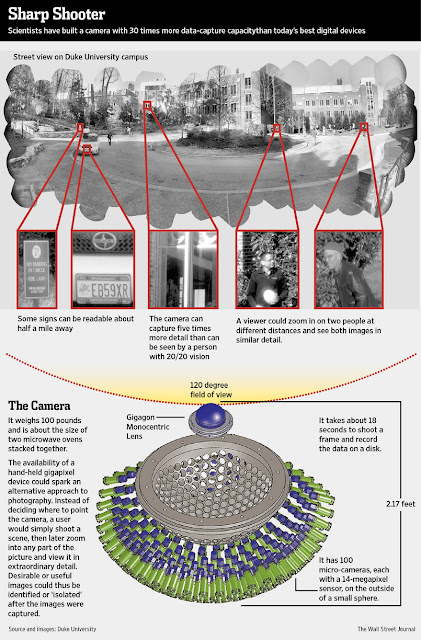(June 20, 2012) By
synchronizing 98 tiny cameras in a single device, electrical engineers from
Duke University and the University of Arizona have developed a prototype camera
that can create images with unprecedented detail.
The camera’s resolution is five times better than 20/20
human vision over a 120 degree horizontal field.
The new camera has the potential to capture up to 50
gigapixels of data, which is 50,000 megapixels. By comparison, most consumer
cameras are capable of taking photographs with sizes ranging from 8 to 40
megapixels. Pixels are individual “dots” of data – the higher the number of
pixels, the better resolution of the image.
The researchers believe that within five years, as the
electronic components of the cameras become miniaturized and more efficient,
the next generation of gigapixel cameras should be available to the general
public.
Details of the new camera were published online in the
journal Nature. The team’s research was supported by the Defense Advanced
Research Projects Agency (DARPA).
The camera was developed by a team led by David Brady,
Michael J. Fitzpatrick Professor of Electric Engineering at Duke’s Pratt School
of Engineering, along with scientists from the University of Arizona, the
University of California – San Diego, and Distant Focus Corp.

